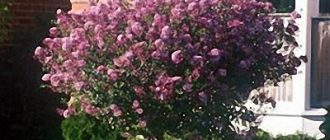Trying to plant the Korean Dogwood? Read ahead for tips on growing a hardy Cornus coreana Korean Dogwood at home…
The Swida coreana or Korean Dogwood belongs to the category of deciduous shrubs or small trees. It usually reaches an average height of 8-16 m tall and is endemic in eastern Asia, northeastern China and Korea. Interestingly, the leaves sprout in opposite directions to each other and grow to lengths of 5 – 12 cm on average.
Shrub Description
The flowers grow in inflorescences with a diameter of 6-8 cm and every individual flower is small and creamy white. This shrub blooms in spring once the leaves have sprouted and grown. The reddish purple berry on the Korean Dogwood is known as the fruit and this round berry is approximately 2.5-3.5 cm in diameter.
Origins of the Korean Dogwood
The origins of the Korean Dogwood can be traced to the Chinese shrub called Walter’s Dogwood and botanically known as the C. walter along with the European Common Dogwood botanically termed the C. sanguinea., in fact, the hardy tree has a place in music too! The singer Devendra Banhart has a song titled Korean Dogwood featured on his music album Cripple Crow.
Properties of the Korean Dogwood
Considered very hardy among the Dogwoods, Cornus kousa or the Korean Dogwood is preferred by gardeners across the globe. Often referred to as the Japanese Flowering Dogwood, the Korean Dogwood is used as a fine-looking miniature sampling tree or flowering shrub and hedge plant. Flowering profusely the shrub looks like a thick carpet of greenery with sharp-edged pale white flowers floating on top of it.
It is ideal to place in a hedge and it provides a thick canopy when placed in the centre or edges of the garden. Smaller plants that need shade can be planted underneath. This allows the soil to be well drained while the dogwood thrives in a sunny spot and provides shade to shorter plants that require indirect sunlight.
Soil Conditions for Korean Dogwood
The hardy Korean Dogwood is not as vulnerable to bugs as compared to the White Dogwood, which is botanically called the Cornus florida., in fact, the Korean Dogwood is usually set as a variety, near a courtyard, or in clusters. Even though the Korean Dogwood tree blooms much later than the White Dogwood, it has soft petal flowers and looks more fragile.
The berries turn deep red or maroon during fall. As it is highly resistant to disease, more and more gardeners are replacing the White Dogwood with the Korean Dogwood. It requires little water and can moderately tolerate alkaline or salty soils and thrives in acidic soils that are well drained.
It should be planted in a sunny spot to avoid infection by cankers. Though very hardy and resistant to bugs, it may get diseased if not planted in the right soil and sun spot. For a healthy plant that blooms annually it is a good idea to transplant a young sapling in a permanent location to let it develop strong roots and thrive as it blooms.





